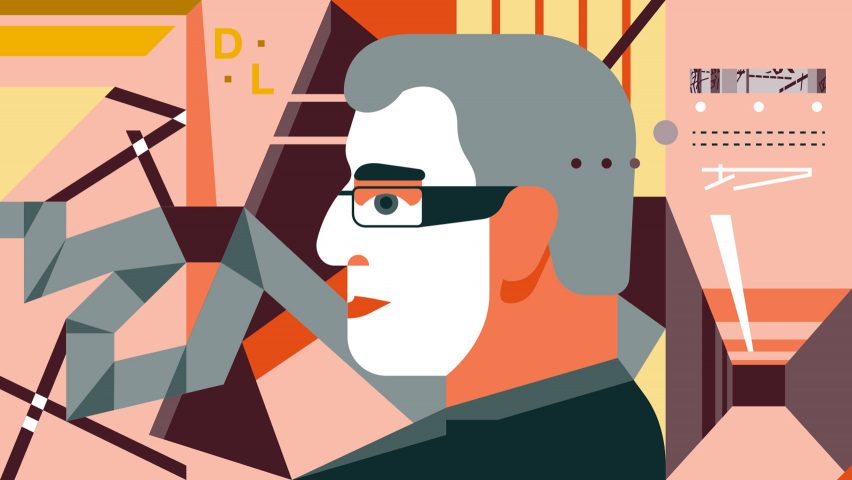
Daniel Libeskind is deconstructivism's "late bloomer"
We continue our deconstructivist architecture series with a profile of Daniel Libeskind who designed one of the movement's most evocative buildings, the Jewish Museum Berlin.
"You know, we shouldn't be comfortable in this world," Polish-American architect Libeskind once told an audience at an event at the Roca London Gallery.
"I'm always surprised that people think that architecture should be comforting, should be nice, should appeal to your domesticity," he said. "Why should [architecture] be comforting?"
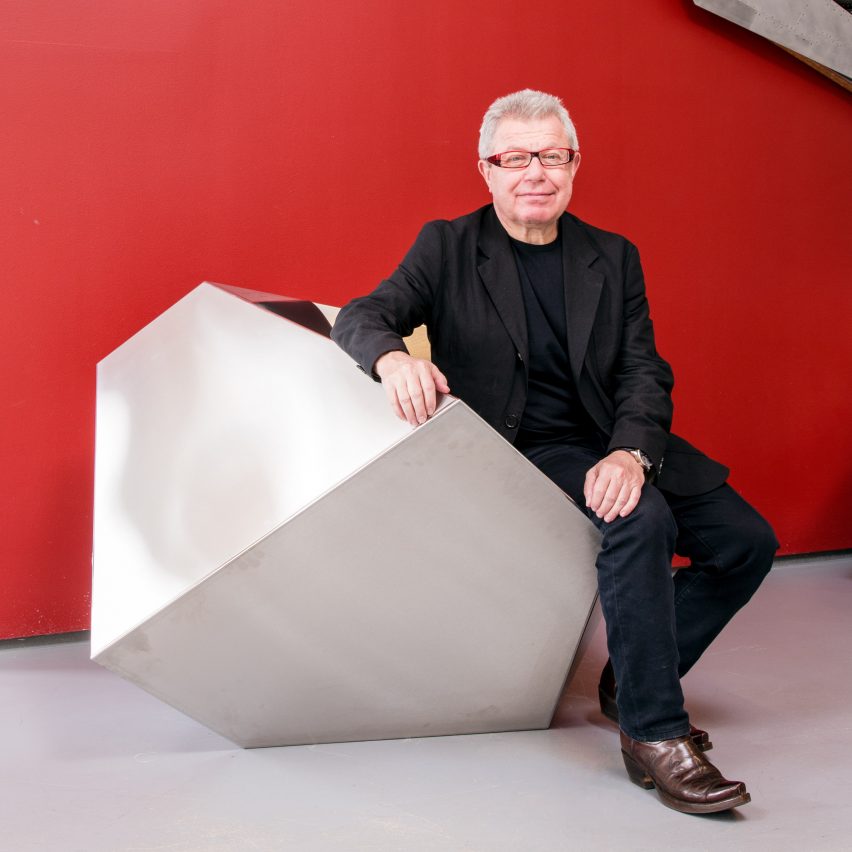
Libeskind was referring to his design of the Jewish Museum Berlin, a controversial building that led the now-76-year-old architect to achieve international fame.
The museum perfectly encapsulates what has become known as his trademark style – an incessant use of sharp angles, slanted surfaces and fragmentation that aims to be symbolic, emotional, and sometimes even uncomfortable.
While designing the museum, the architect came up against criticism because his design did not resemble traditional museums and instead "challenges every facet of convention".
It is, therefore, no surprise that his work is synonymous with deconstructivism – the influential architecture movement from the 1980s that opposed rationality and symmetry.
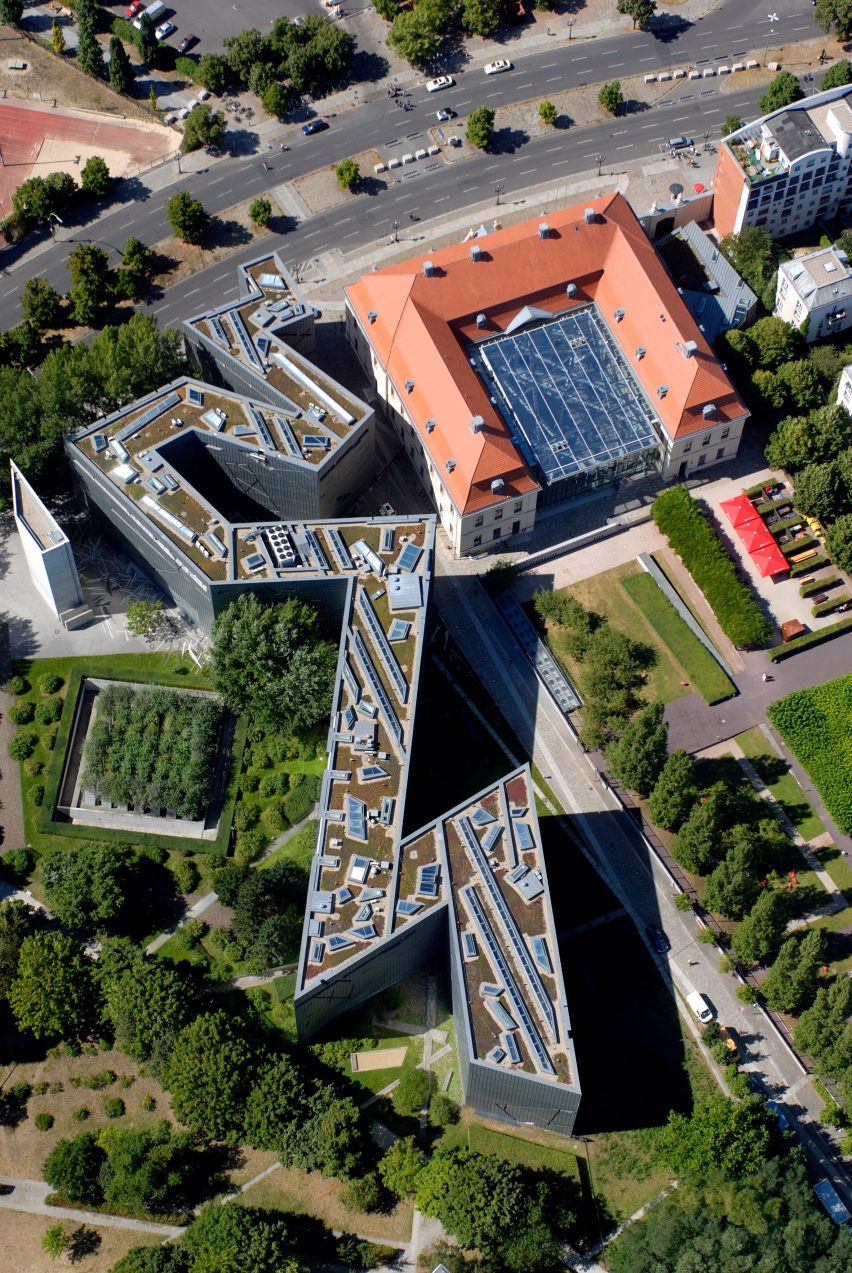
Libeskind, the son of Jewish Holocaust survivors, was born in 1946 in Lód'z, Poland. Today he is one of the world's most renowned architects.
Yet, despite his starchitect status, architecture was not always his focus. In fact, the self-professed "late bloomer" did not complete a building until the age of 52.
As a child, Libeskind's first passion was music. He trained as an accordion player and, after migrating to Israel with his family in 1957, received a scholarship from the American-Israel Cultural Foundation that led him to perform as a virtuoso.
It was not until his family migrated to New York in 1965 that he set his sights on architecture. Though, his musical background continues to influence his work.
"I've always thought that architecture and music are closely related," he explained in his TED talk.
"First of all emotionally architecture is as complex and as abstract as music but it communicates to the soul, it doesn't just communicate to the mind."
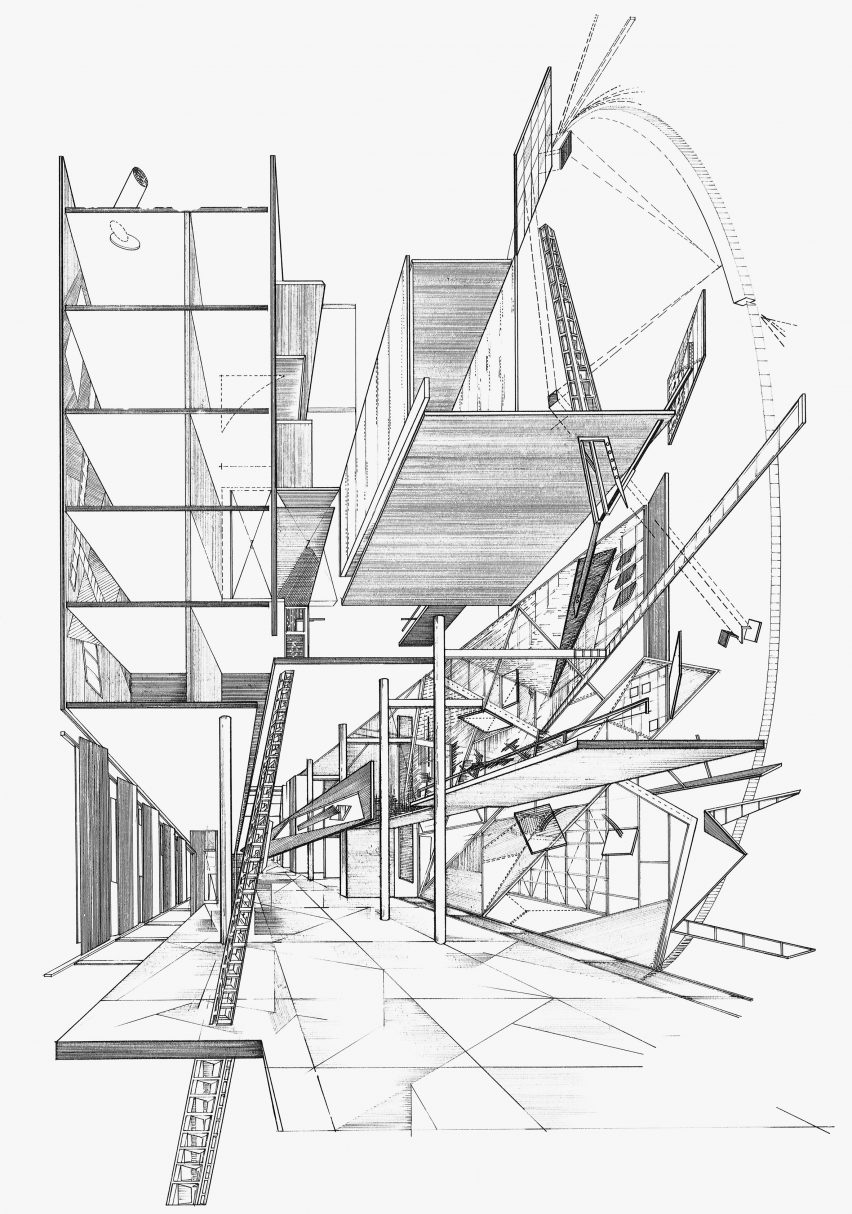
Libeskind began his architectural career studying at Cooper Union for the Advancement of Science and Art and later at the School of Comparative Studies at Essex University. After working briefly for both Richard Meier and fellow deconstructivist architect Peter Eisenman, he went on to work in architectural academia.
His work was catapulted into the spotlight in 1988 when curator Philip Johnson invited him to take part in the seminal Deconstructivist Architecture exhibition at the Museum of Modern Art (MoMA) in New York – despite not having completed a building at the time.
The exhibition, which also featured works by his fellow deconstructivists Frank Gehry, Zaha Hadid, Rem Koolhaas, Bernard Tschumi, Eisenman and Wolf Prix, saw Libeskind present an unbuilt proposal for a housing development named Berlin City Edge.
However, in a recent exclusive interview with Dezeen, Libeskind shrugged off his deconstructivist label, claiming that today "the style doesn't mean very much to [him]".
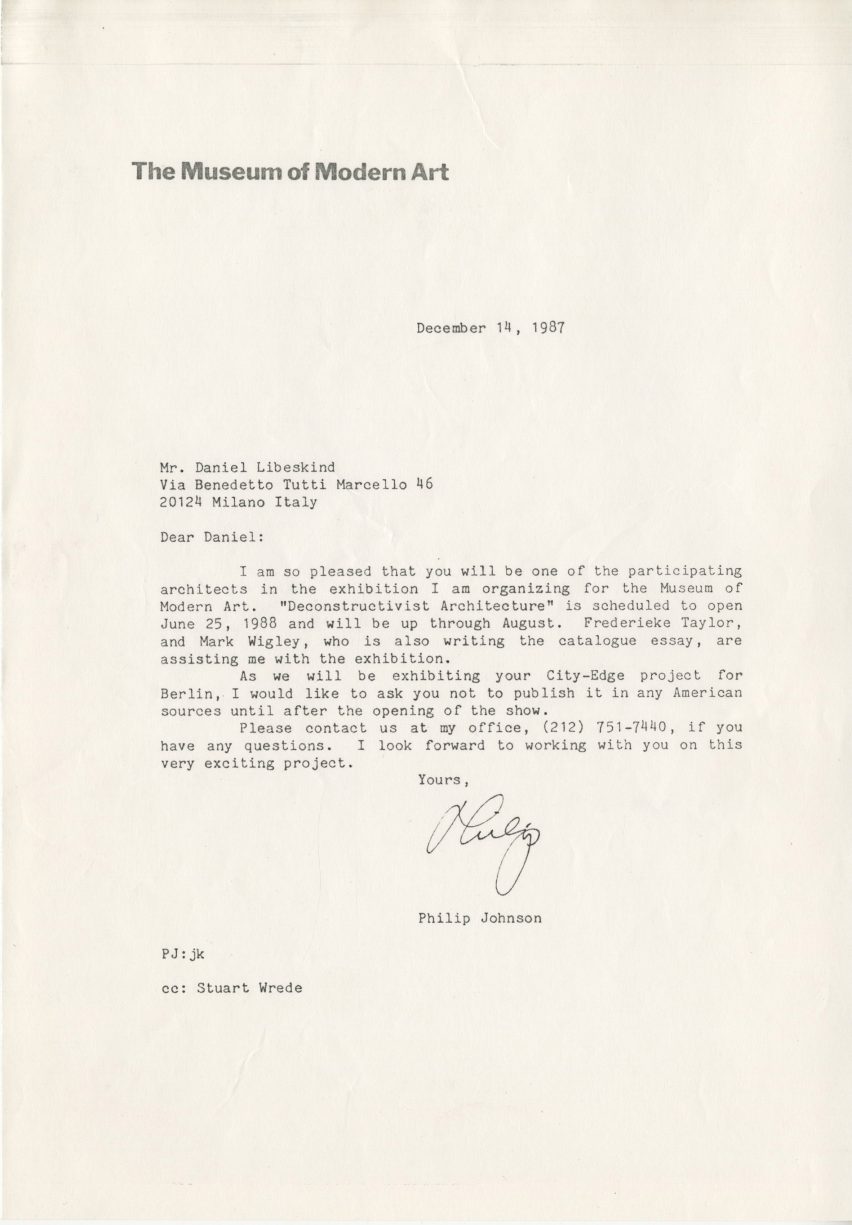
The term deconstructivism derives from the deconstruction approach to philosophy and the Russian architectural style of constructivism. According to Libeskind, it "was not a great word for architecture".
"I don't find usefulness in this term in architecture, I always felt slightly repulsed by it because it became a kind of intellectual trend," Libeskind told Dezeen.
Instead, he said, the exhibition marked a change in the industry and an emergence of architects who wanted to reestablish architecture as a form of art.
"[Deconstructivism is] not a style at all, but something in the air about the demise of former logic and former notions of harmony and former notions of beauty."
"These architects had a very different idea than the sort of corporate and conventional styles of the late 1980s," he reflected, referring to the other MoMA exhibitors.
A year after the seminal MoMA exhibition, Libeskind won the commission for the Jewish Museum in Berlin, which would be his second completed building following the Felix Nussbaum Haus museum in Germany and marked the beginning of his illustrious career in built works.

To complete the project, he moved to Berlin and established Studio Libeskind with his wife Nina, which he continues to direct today. The museum officially opened in 2001 and soon became an established landmark in the capital.
Formed of a sharp zigzagging plan broken up by deep voids, the museum is designed to trigger "memories and emotional responses".
"When I explored the site for the Jewish Museum in Berlin, I put myself into the souls of those who are not there, into the emptiness I felt," Daniel Libeskind once wrote for CNN.
"I tried to see how it would feel to be there when you're not there. What does it mean to create a space for those who were murdered, who disappeared in the smoke?"
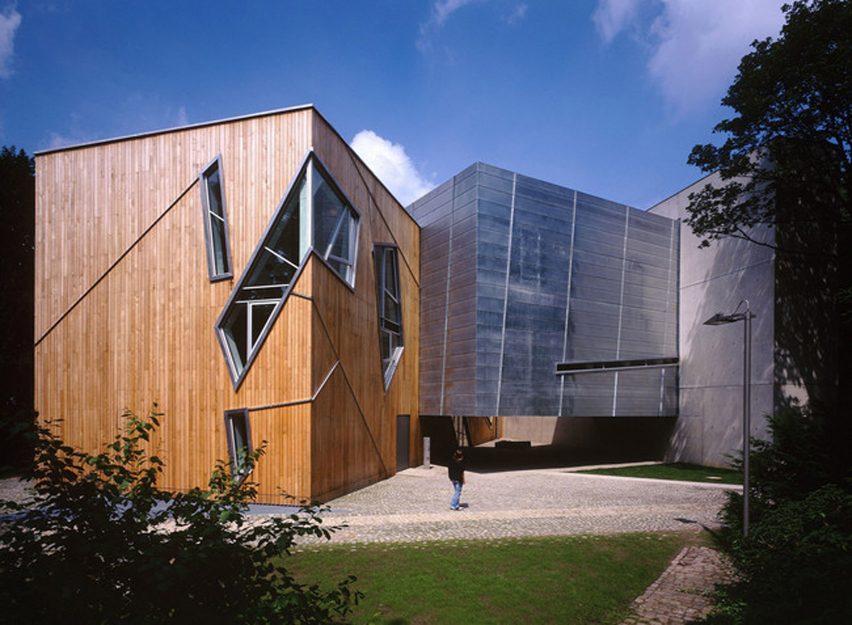
Shortly after the completion of Jewish Museum Berlin, Libeskind won the high-profile commission for Ground Zero, the masterplan for the rebuilding of New York's World Trade Center following the 9/11 terrorist attacks.
His framework for Ground Zero included a memorial and a museum to the tragedy, alongside a transport hub and cluster of towers.
There was also a central skyscraper called the Freedom Tower, which had a symbolic height of 1,776 feet to represent the year of America's independence, though this was replaced by the One World Trade Center by SOM.
It was a turbulent process and experienced a number of hold-ups, but it cemented him as the go-to architect for creating poignant monuments for tragic events, defining his work that followed.
Among Libeskind's other key projects is the aluminium Imperial War Museum North in the UK, the parasitic Military History Museum in Dresden and the titanium-clad Denver Art Museum in the US.
He is also the architect behind the angular Reflections at Keppel Bay towers in Singapore and the Bord Gáis Energy Theatre in Ireland – all of which are characterised by Libeskind's signature splintered forms.
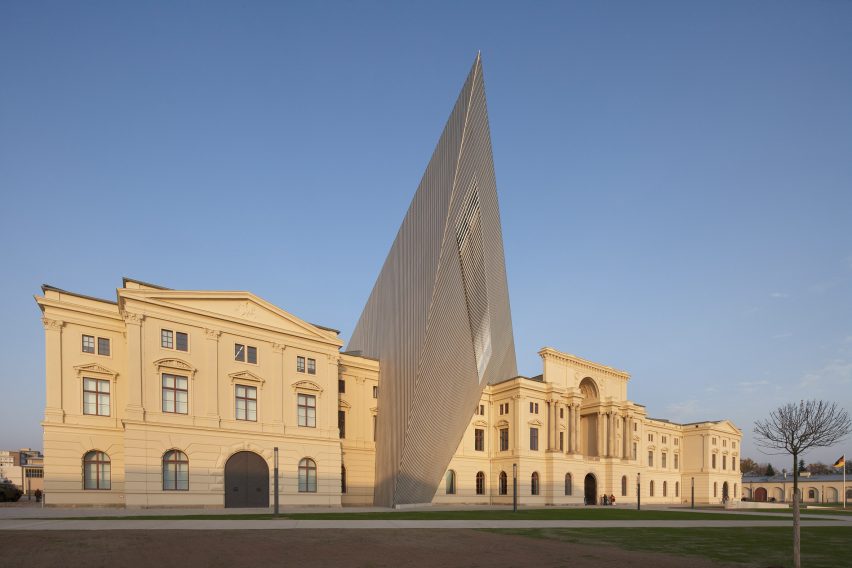
Libeskind has come under much criticism for his work and trademark style, which architectural historian William J R Curtis once described as "a reduction to caricature of all that the Jewish Museum set out to achieve".
More recently, novelist Will Self claimed Libeskind put money before art in a piece for British architecture magazine BD attacking high profile architects.
However, Libeskind never reads his critics and has previously said that he does not try to be liked.
"When things are first shown they are difficult," Libeskind told Dezeen. "If you read the reviews of Beethoven's Fifth Symphony, it was a failure, a horrible piece of music."
"You have to give it time. Architecture is not just for the moment, it is not just for the next fashion magazine. It's for the twenty, thirty, fifty, one hundred, two hundred years if it's good; that's sustainability."
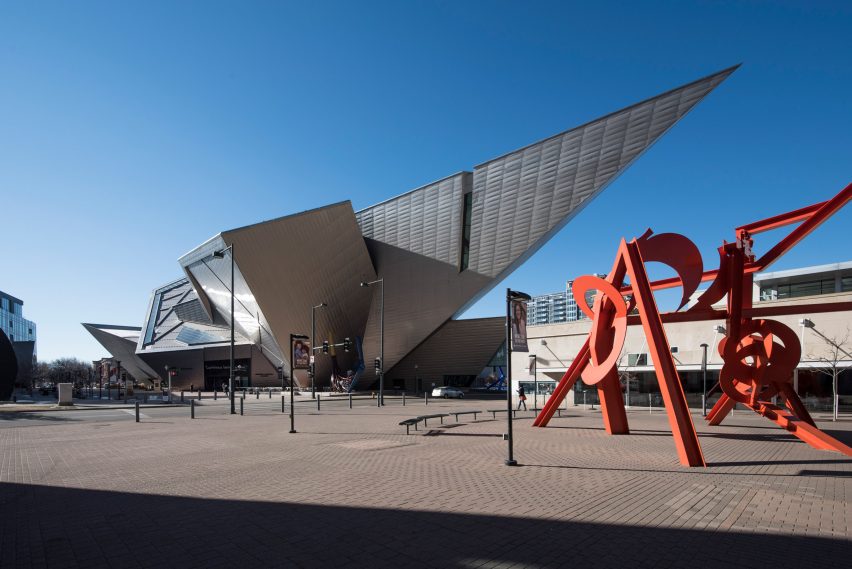
Though Libeskind does not see himself as a deconstructivist, he understands why his work is associated with the movement.
This is because, he said, his goal is to "not to let architecture freeze itself and fall asleep, not to let architecture become just a kind of business proposition, just to build something".
"Maybe that is what deconstructivism is, really is," he told Dezeen.
"It's architecture that seeks meaning. Which is, I think, what brings us close to the philosophical sense of deconstruction in philosophy or literature that seeks to uncover what is there, but it's not readily accessible by the blinkers of anywhere on our eyes."

Deconstructivism is one of the 20th century's most influential architecture movements. Our series profiles the buildings and work of its leading proponents – Eisenman, Gehry, Hadid, Koolhaas, Libeskind, Tschumi and Prix.
Read our deconstructivism series ›